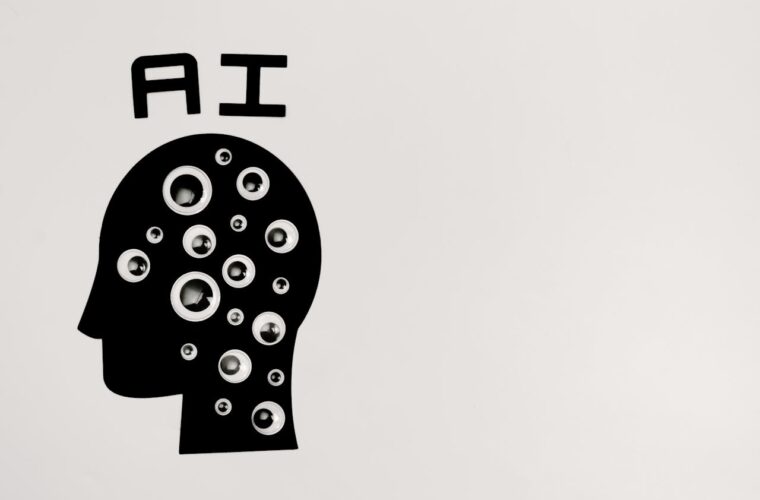How AI-Driven Authentication is upping the game in online security
In an era where data breaches and cyber threats loom large, securing online accounts has become a huge concern. With the proliferation of cybercrimes, from phishing scams to brute-force attacks, the conventional methods of securing online accounts, such as passwords and OTPs, are proving to be insufficient. This escalating cyber threat landscape is fueling the need for more advanced security protocols. Enter the game-changer – AI-driven authentication.
As we delve deeper into the digital age, the sheer volume of data created and stored online is staggering. This data, if unprotected or inadequately safeguarded, is a treasure hunt for cybercriminals looking to exploit it for their malicious purposes. Consequently, the rising need for more proactive cybersecurity measures has become the need of the hour. Traditional security measures, while they still hold relevance, are increasingly being bypassed, resulting in data breaches.
Here comes into the scene Artificial Intelligence (AI). Known for its ability to learn, adapt, and predict, AI is revolutionizing various sectors, and online security is no exception. AI-driven authentication is a cutting-edge technology that promises to bolster the security of online accounts. It employs sophisticated algorithms that learn from user behavior to provide a more secure, personalized, and streamlined authentication process.
How AI-driven authentication works
At its core, AI-driven authentication is about understanding user behavior. It starts with the system learning the typical behavior of a user by analyzing various parameters like login times, IP addresses, frequently accessed applications, and more. Over time, it builds a user profile that serves as the basis for authenticating future logins.
The AI system continuously updates this user profile, learning and adapting to changes in behavior. If an attempted login deviates significantly from this established pattern, the system flags it as suspicious. It may then require additional verification, such as a fingerprint or facial recognition, or deny access altogether.

Moreover, AI-driven authentication systems employ advanced machine learning algorithms that can detect patterns and anomalies that might be missed by human analysts. They can also predict potential security threats, enabling proactive measures to prevent cyber-attacks. This intelligent, adaptive, and predictive capability sets AI-driven authentication apart from traditional security measures.
Benefits of AI-driven authentication
AI-driven authentication offers a tons of benefits, starting with enhanced security. By learning and adapting to user behavior, it provides a personalized security layer that is difficult for cybercriminals to bypass. This dynamic security measure is particularly effective against brute-force attacks, where hackers attempt to guess passwords.
Next, AI-driven authentication reduces the dependence on passwords. Passwords, while convenient, are a weak link in online security. They can be easily stolen, guessed, or forgotten. With AI-driven authentication, the need for passwords is minimized, if not entirely eliminated.
And last, AI-driven authentication improves user experience. It streamlines the authentication process, reducing the need for repetitive logins or complicated password requirements. It can also provide real-time alerts for suspicious activities, enabling users to take immediate action.
Real-world examples of AI authentication
AI-focused authentication is not a futuristic concept; it’s already being used in various sectors. For instance, in banking, AI authentication is used to safeguard online transactions. By analyzing transaction patterns, it can detect and prevent fraudulent activities.
Social media platforms are another arena where this authentication is prevalent. Companies like Facebook and Twitter use AI to detect suspicious login attempts and protect user accounts. They analyze patterns like login location and time to flag any unusual activities.
Moreover, in the healthcare sector, AI-driven authentication is used to secure patient data. By learning the typical access patterns of healthcare professionals, AI can detect unauthorized access attempts, enhancing the security of sensitive patient data.
Different AI authentication service providers
Nowadays there are a lot of companies that offer these types of authentication services. BioCatch, for instance, provides behavioral biometrics, leveraging AI to analyze user behavior and create unique user profiles. It can detect anomalies in real-time, preventing fraudulent activities.
NuData Security is another notable player in the field. Their solution uses AI to analyze hundreds of user behavior variables, offering robust protection against cyber threats. It can also predict future attacks, enabling proactive security measures.
Then there’s SecureAuth, which offers adaptive authentication using AI. It analyzes various factors, such as device recognition, geo-location, and threat services, to provide secure access control. It’s a flexible solution that can be adapted to various business needs.
So, as we can see, AI authentication represents a transformative approach to cyber security, offering a sophisticated, user-centric defense mechanism that not only tightens security but also simplifies the user experience. As it gains traction across various sectors, this technology is poised to become the cornerstone of online security in an increasingly digitalized world.



